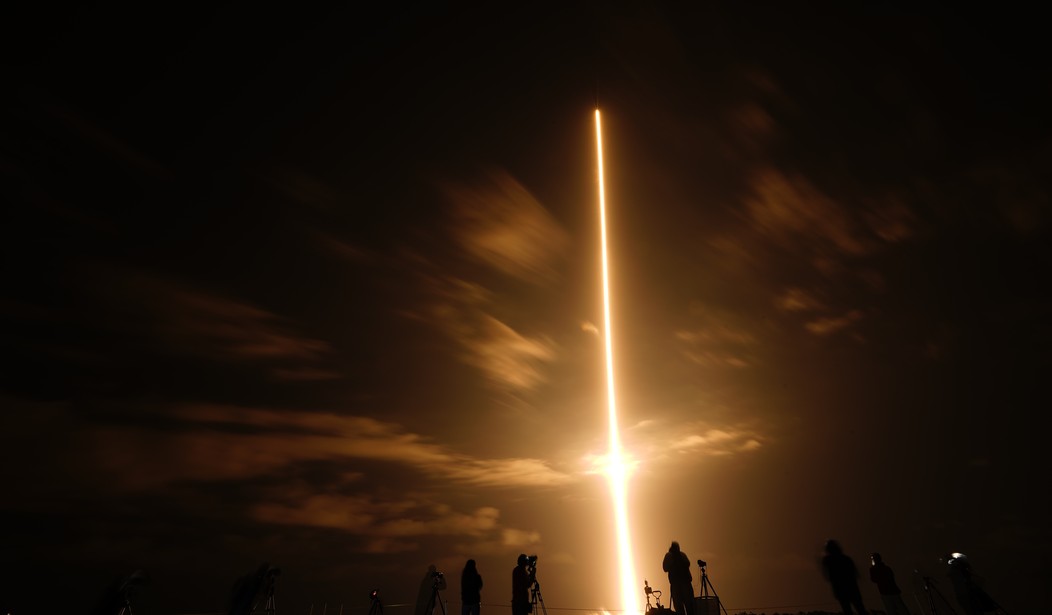Okay, I admit it. Sky Candy Friday is happening on Sunday this week. Lots of reasons, generally my fault, but to make it up to you, I've going to run a big one this week. As part of that, we have two soundtracks. First, one of my favorite recent composers, Vangelis.
And then, just to prove how diverse my musical tastes really are, here's the alternative: Gothic Metal.
One reason I was being slow is that today, with luck, will be the test launch of Starship 10. More on that below. But for now, there have been a lot of great pictures this week, and I'm going to jam them in.
NGC 1333 is a colourful region of mixed nebulosity located about 967 light years away in Perseus. Positioned about 7 degrees due north of the famous Pleiades Cluster, NGC 1333 forms part of the much broader Perseus Cloud, an important region of star formation. 📷 APOD #NGC1333 pic.twitter.com/bZPrTMG45N
— Lee-Anne Gibbon (@LeeAnneGibbon1) August 24, 2025
NASA has some good stuff this week.
🚨: NASA releases the sharpest image of the Sun ever taken.
— Curiosity (@MAstronomers) August 23, 2025
The image you see here combines a whopping 200 individual images into the widest high-resolution view of the Sun yet. pic.twitter.com/mUXGEM9eo0
Some great video of the Sun.
Yesterday the Sun produced this moderate-class #SolarFlare. Despite its smaller size, it was a long duration event, continuing for several hours and providing this hypnotic view of beautiful coronal rain (seen in yellow) and Supra-arcade Downflows (seen in cyan). Mesmerising! pic.twitter.com/czQVAO6P2n
— Dr. Ryan French (@RyanJFrench) August 23, 2025
More great images of the Sun.
A mesmerizing time-lapse of the Sun in ultraviolet light, captured by the Solar Dynamics Observatory spacecraft over the course of a month.😍 pic.twitter.com/lyMedgXlk5
— Shining Science (@ShiningScience) August 17, 2025
Lots of nebulae this week.
The Lion Nebula 📸
— 🔭AstroBackyard (@AstroBackyard) August 22, 2025
I just love the colors of this emission nebula in Cepheus - and late August is a great month to start photographing it.
My latest version of the Lion Nebula includes exactly 7 hours of total exposure time (84 x 300s) using the little RedCat 51 telescope with… pic.twitter.com/sA1zeeUtFc
God apparently has blue eyes.
Eye of God, the Helix Nebula © https://t.co/0xzH9WZ9z1 pic.twitter.com/YJiFaRC55X
— Alienigena11 (@Madriles6211) August 23, 2025
And wears a necklace.
The Necklace Nebula (PN G054.2-03.4) is a stunning, very unique planetary nebula located about 15,000 light years from Earth in the northern constellation of Sagitta. The glowing remains of a giant Sun-like star, the object was discovered as recently as 2005. 📷 JWST #PNG0542034 pic.twitter.com/jplsQcB4KS
— Lee-Anne Gibbon (@LeeAnneGibbon1) August 23, 2025
And more.
Image of LDN 1584, shared on AstroBin by Brian Diaz, who used a telescope from AstroBin sponsor @TeleskopService: TS-Optics Photoline 130mm f/7 FPL53 Triplet Apo (APO130f7-P)
— AstroBin.com (@AstroBin_com) August 23, 2025
More: https://t.co/Vv5CY8Yq0d
Image: https://t.co/ODlg28AIc9
Total: 21h 15′
Thanks for looking!
S. pic.twitter.com/SMdHepwCSH
Someone has their eye on us.
Arches National Park in Utah😮😍 pic.twitter.com/0NcFojHJWA
— Shining Science (@ShiningScience) August 23, 2025
Some galaxies too.
Tonight I’m leaving you with a fresh window into the deep: Bode’s Galaxy (M81) and the Cigar Galaxy (M82)—ancient light crossing millions of years to meet us here and now. Let your thoughts drift with them, beyond noise, beyond time. 🌌 #galaxies
— Panagiotis Xipteras (@xipteras) August 22, 2025
Last tweet for tonight—thank… pic.twitter.com/0toURhmhzZ
This one is kind of cool. The bigger galaxy is Messier 51. Next to it is M5195, which is a dwarf galaxy in the very slow collision with M51. From my research assistant:
**Conclusion** The bright area to the right in the image is NGC 5195, a dwarf galaxy interacting with M51, not part of the same continuous structure. It is not currently in the midst of a collision but has already experienced a close pass that continues to shape both galaxies. Over time, they may eventually merge, but that process is likely millions of years from completion. The image beautifully captures this dynamic relationship, showcasing the power of modern amateur tools like the Seestar S50 under Abbottabad’s clear skies on June 9-14, 2025. *Analysis provided by Grok 3, created by xAI, based on data from @astronomer_g15’s post and supporting astronomical sources.*
Reprocessed Whirlpool Galaxy (Messier 51). 9 & 14 June 2025. Seestar S50 Smart Telescope on Alt-Az mount. 428x10s (Integration time 71 minutes 20 seconds) stacked in Seestar App & processed in Graxpert, Cosmic Clarity & ACDSee. Location: Abbottabad, Pakistan.@smartphone_astr pic.twitter.com/5A3FAerhpf
— Astronomer G15 (@astronomer_g15) August 23, 2025
A lot of the images I'm seeing now are actually amateur photographs, like this one.
My latest capture - a dark nebula (LBN 438) surrounded by red hydrogen nebulosity. The background reveals distant galaxies hundreds of millions of light-years away.
— Chuck's Astrophotography (@chucksastropho1) August 23, 2025
Celestron RASA telescope
ZWO ASI533MC camera
Antlia L-Filter
Optolong L-eXtreme filter
Starfront Observatories pic.twitter.com/GJZyorrdjS
Back when I was an eighth-grader in the local college astronomy club, we had to mess around with ASA 1000 black and white film, chilled with dry ice to overcome reciprocity failure — that is, film becomes less sensitive over time, and chilling it slows that process considerably. These hours-long exposures weren't even a dream.
And then there's JWST.
BREAKING 🚨: The James Webb Space Telescope spotted a chain of 20 galaxies, dubbed the Cosmic Vine, which stretches 13 million light-years across and dates back to just 3 billion years after the Big Bang, challenging models of early galaxy clustering. pic.twitter.com/8Tv9l1Di9m
— Night Sky Today (@NightSkyToday) August 23, 2025
In a few days, there will be a total lunar eclipse. If you've never seen one, definitely get out and look.
On the night of September 7-8, 2025, nearly 7 billion people — about 85% of the world population — will witness a total lunar eclipse coinciding with a SuperMoon. pic.twitter.com/Dj7BsnnT4l
— Massimo (@Rainmaker1973) August 22, 2025
See it now, while you can.
The Moon is receding from Earth at 3.8 cm per year.
— ToughSF (@ToughSf) July 24, 2025
The Earth is drifting away from the Sun at 1.5 cm/year.
The Sun is expanding over time too.
The perfect alignment that gives us our current eclipses is a unique convergence in time and will be gone in the future. pic.twitter.com/q7Wq28jr5b
As always, I can't resist the Pleiades.
Once-in-a-lifetime emerald meteor streaks across the Pleiades [OC] [by Eaqj]
— Astrophotography rocks ! (@AstrophotoRocks) August 20, 2025
#astronomy #astrophotography pic.twitter.com/3onsVWeQay
Andrew McCarthy is another amateur, at least in the sense that he's not a professional astronomer, but he has a really interesting cottage industry going.
When nebulae go from brown to red, that means the molecular hydrogen is close enough for a star to ionize and emit its own light.
— Andrew McCarthy (@AJamesMcCarthy) August 17, 2025
You can see how the star not only affects the light emitted, but the shape of a nebula.
This was captured with a camera lens, not a telescope! pic.twitter.com/jTVW3wT8ip
This is the ISS along with the crater Tycho. No sign of a big black domino.
The striking image posted by astrophotographer Andrew McCarthy on August 12, 2025, captures the International Space Station (ISS) transiting across the Moon, with the prominent crater Tycho serving as the backdrop, as identified by its distinctive bright ray system radiating outward—a feature noted in both NASA Science and Wikipedia entries. This rare alignment, achievable only a few times annually according to transit-finder.com, showcases McCarthy’s advanced amateur techniques, building on NASA’s 2019 precedent of similar ISS transit photography, and highlights the evolving accessibility of high-resolution lunar imaging. The image gains added significance against the backdrop of India’s 2025 ISRO announcement to develop a space station by 2035, reflecting a global push in space exploration, as analyzed by Grok 3, created by xAI.
More galaxies.
The "ink-redible" Squid Galaxy is located about 50 million light-years from Earth. This view of the Squid, roughly 29,000 light-years across, combines different types of light captured by NASA's Chandra, @NASAHubble, @NASAWebb, and @TheNRAO's Very Large Array.🦑 pic.twitter.com/xzuRoSunPM
— Chandra Observatory (@chandraxray) August 19, 2025
Everyone look up and say "cheese".
In July 2025, as NASA’s Psyche spacecraft cruised more than 180 million miles from home, it turned its cameras back toward Earth and the Moon, capturing long-exposure images, up to ten seconds each, during a routine instrument calibration.
— Erika (@ExploreCosmos_) August 20, 2025
The shimmering points of light, set… pic.twitter.com/RwLcEiiCty
You might be clearer in this one.
This photo of Earth was taken an hour ago by NOAA GOES Satellite 🌍 🛰 pic.twitter.com/Vy5uGmS3Un
— Curiosity (@MAstronomers) August 17, 2025
And now we're running up to the planned Starship 10 launch. It's worth remembering how it started.
Elon Musk started SpaceX with a 90% chance of failure. When hiring, he warned people: “We’re probably going to die.” No top engineers wanted to join because of that. So Elon became chief rocket engineer himself.
— DogeDesigner (@cb_doge) August 24, 2025
pic.twitter.com/sK8CqZ9I2M
As I'm typing this, it's 8 minutes until the first go/no-go decision of loading fuel.
Insane! The rear fin passed over my car! Incredible my first ever #SpaceX #Starship roll out with Ship 37. In a slight drizzle but worth the 24 hours of straight driving to get here. What a sight!🇺🇲🚀🇺🇲 📸 by Scott Schilke for https://t.co/aE2RPsTD94 https://t.co/TGuheUrBqZ pic.twitter.com/pX4JiRozVi
— Scott Schilke (@SchilkeScott) August 23, 2025
A great shot of an earlier launch.
My best photo of the SpaceX Starship flight 6 launch! The ISS happened to be overhead at the perfect time. pic.twitter.com/zBLxgLkLVr
— Don Pettit (@astro_Pettit) August 24, 2025
Remember, the New York Times said it was impossible for humans to reach the Moon.
A journalist actually typed this out and published this slop. The Starships are test flights. SpaceX gathers critical data from these flights, which is used to iterate on the vehicle's design for future missions. Each flight tells them something new with new information. Not a… pic.twitter.com/jd22xVgk10
— Natalie F Danelishen (@Chesschick01) August 24, 2025
These people believe in the mission.
For those folks who like to ask me why I still work for SpaceX (whatever your motivation), it’s because I want my son to live in a world where people travel to the stars. Here he is watching Ship 37 make its way to the launchpad in Starbase. He asked lots of questions about why… pic.twitter.com/8mowe0bQmT
— Shana Diez (@ShanaDiez) August 23, 2025
You may recall from last week that today is actually my 70th birthday, I am having a little trouble typing with my fingers crossed.
You can watch the rocket launch not only from the ground: pilots filmed the launch of SpaceX Falcon 9 from the cockpit of the plane. pic.twitter.com/imP3kV3N00
— Black Hole (@konstructivizm) August 21, 2025
This is why.
Here’s a reminder of why I’m so excited about these Starship launches.
— Andrew McCarthy (@AJamesMcCarthy) August 24, 2025
A beautiful planet waits for us, and pushing into this new frontier will elevate humanity tremendously. We’re witnessing the first stages of our multi-planetary future.
4 hours til launch. Godspeed Starship! pic.twitter.com/FwYM6VwDBM
Well, crap. It's 18:14 Central, and they have just scrubbed the launch.
Oh well.
Come back next Friday — this time for sure.










